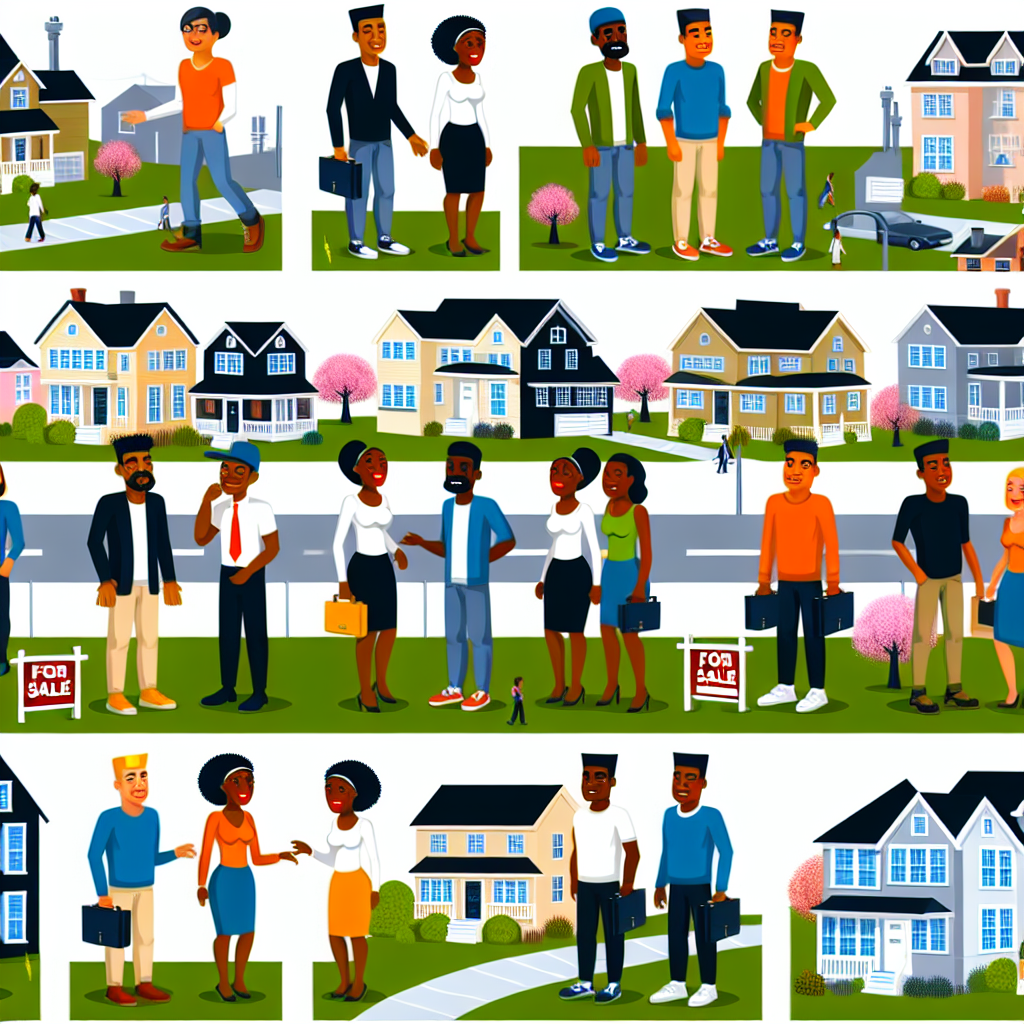Understanding Your Budget and Financial Limitations
Assessing Your Finances
Begin by evaluating your current financial situation.
Calculate your total income from all sources.
Next, assess your existing debts and monthly expenses.
This helps determine how much you can afford for a mortgage.
Setting a Realistic Budget
Establish a clear budget for your home purchase.
Consider both the down payment and ongoing costs.
Typically, aim for a down payment of at least 20 percent.
However, some programs allow lower down payments.
Account for additional expenses, such as closing costs and repairs.
Understanding Loan Options
Explore various mortgage options available to you.
Conventional loans are popular, but they require a solid credit score.
FHA loans allow for lower credit scores but require mortgage insurance.
Remember to compare interest rates from multiple lenders.
Factoring in Future Expenses
Consider potential future expenses when choosing a budget.
Think about property taxes, homeowner association fees, and insurance.
Each factor can influence your overall monthly costs significantly.
Long-term planning is crucial for first-time homebuyers.
Consulting a Financial Advisor
Seek advice from a financial advisor if needed.
An expert can help clarify your options and provide insights.
They can assist in navigating complex financial situations.
Building a solid financial foundation is essential for homeownership.
Researching Average Home Prices in Different Neighborhoods
Understanding Market Trends
Begin by gathering data on current market trends.
Look for reputable sources such as real estate websites.
Check online platforms like Zillow or Realtor.com.
They often provide valuable insights into price fluctuations.
Additionally, consult local real estate agents for expert opinions.
Comparing Neighborhoods
Create a list of neighborhoods that interest you.
Evaluate average home prices in each area.
Avoid focusing solely on one neighborhood.
Instead, consider multiple options for comparison.
This helps in making informed decisions later.
Assessing Additional Costs
Consider factors beyond purchase prices.
Evaluate property taxes, insurance, and maintenance costs.
These expenses can add up quickly and impact your budget.
Factor in utilities and fees for homeowners associations.
Using Online Tools
Utilize online tools for deeper analysis.
Price trend graphs can illustrate market fluctuations over time.
Interactive maps often show neighborhood statistics visually.
Make use of these resources to visualize your options.
Networking with Local Residents
Speak with residents in potential neighborhoods.
Ask about their experiences living in the area.
Gather insights on safety, amenities, and community vibe.
This firsthand information can aid your decision-making.
Setting Your Budget
Establish a clear budget based on your research.
Determine what you can afford by reviewing your finances.
This includes savings, income, and credit scores.
A solid understanding ensures you don’t overspend.
Evaluating the Quality of Local Schools and Educational Opportunities
The Importance of Schools
Local schools significantly impact home values and community appeal.
A strong school system often attracts families and promotes stability.
Good schools can enhance your potential resale value down the line.
Researching School Ratings
First, investigate school ratings in the area.
Websites like GreatSchools provide insights into school performance.
Consider both test scores and other indicators of academic achievement.
Visiting Schools
Schedule visits to local schools to assess their environment.
Observe classroom dynamics and facilities firsthand.
Engage with teachers and staff to gauge their commitment.
Understanding Educational Programs
Explore the variety of educational programs offered by schools.
Look for specialized programs in science, arts, or languages.
Consider extracurricular activities that enhance student engagement.
Community Resources for Education
Research community resources available to students and families.
Library programs and tutoring services add value to education.
Strong community involvement often bolsters school funding and support.
Long-Term Educational Trends
Investigate long-term educational trends in your chosen neighborhood.
High graduation rates can indicate effective educational practices.
Look at the trend of school funding and resource allocation over time.
School District Boundaries
Understand local school district boundaries before buying.
Neighborhoods may fall into different districts with varying quality.
Identify which district aligns best with your family’s needs.
Explore Further: Home Inspection Checklist For Identifying Signs Of Termite Damage
Assessing Safety and Crime Rates in Potential Neighborhoods
Safety is a top priority for first-time homebuyers.
Understanding the crime rates in different neighborhoods helps you make informed decisions.
Start by researching local crime statistics online.
Websites like NeighborhoodScout and local police department pages can provide valuable insights.
Contact local law enforcement for the most recent data and trends.
Evaluating Crime Trends
Look at trends over several years instead of just recent data.
This approach gives a more accurate overview of neighborhood safety.
Identify any patterns in types of crimes that may concern you.
Engaging with the Community
Community feedback offers additional perspective on safety.
Visit local forums or social media groups for residents’ insights.
Communicate with neighbors during visits to understand their experiences.
Utilizing Safety Apps and Resources
Many apps provide crime reports and safety ratings for neighborhoods.
Apps like Citizen and SpotCrime can offer real-time alerts.
Use these tools to stay informed about nearby incidents.
Identifying Neighborhood Features
Consider the presence of local amenities that contribute to safety.
Proximity to schools, parks, and community centers often enhances neighborhood appeal.
Locations with active neighborhood watch programs tend to be safer.
Deciding on Safety Standards
Establish your personal safety standards before you start house hunting.
Decide which crime rates you consider acceptable for your lifestyle.
Prioritize safety features that are important to you and your family.
See Related Content: How to Spot Red Flags During a Home Inspection
Considering Commute Times and Accessibility to Work
Importance of Commute
Your daily commute significantly impacts your lifestyle.
Long commutes can lead to increased stress levels.
Moreover, they can consume valuable time that could be spent on personal activities.
Minimizing your commute helps enhance work-life balance.
Evaluating Commute Options
When choosing a neighborhood, consider the distance to your workplace.
Research various transportation options available in the area.
Public transit can be a convenient option if you prefer not to drive.
Additionally, bike lanes or walkable paths can promote healthier commuting.
Assessing Traffic Patterns
Analyze peak traffic hours in your potential neighborhood.
Understanding traffic flow can help you predict your daily travel time.
Consult local resources or traffic apps for real-time insights.
Moreover, consider alternative routes to avoid congestion.
Convenience of Amenities
Proximity to essential services adds to a neighborhood’s appeal.
Grocery stores, healthcare facilities, and schools play significant roles.
Easy access to these amenities can reduce your overall commuting time.
Furthermore, check if local cafes, parks, and recreational areas enhance your lifestyle.
Examining Future Developments
Consider the area’s development plans when choosing a neighborhood.
A looming public transit expansion may improve accessibility significantly.
Likewise, new businesses can transform your commute and living experience.
Stay informed about local government announcements and development proposals.
See Related Content: The Benefits of Pre-Approval Before Starting Your Home Search

Identifying Neighborhood Amenities and Services
Importance of Amenities
Amenities shape the living experience in a neighborhood.
They enhance comfort and convenience for residents.
Moreover, they significantly affect property values.
Types of Neighborhood Amenities
Consider parks, schools, and grocery stores.
Parks provide recreational spaces and community gathering spots.
Schools are vital for families with children.
Grocery stores make essential shopping easily accessible.
Assessing Proximity
Evaluate how close these amenities are to potential homes.
Walkability can greatly influence your day-to-day life.
Additionally, consider the availability of public transportation options.
Community Services
Look for nearby healthcare facilities and libraries.
Healthcare access is crucial for all residents.
Libraries provide educational resources and community activities.
Exploring Local Shops and Restaurants
A vibrant community often includes unique local shops.
Restaurants and cafes offer socializing opportunities.
Visit the area to get a sense of the local culture.
Safety and Neighborhood Vibe
Amenities can enhance safety perceptions in a neighborhood.
Research crime rates and community reviews online.
Engage with locals to understand the neighborhood atmosphere.
Find Out More: Why Off-Market Listings Are the Key to Finding Hidden Home Deals
Exploring Future Development Plans and Neighborhood Growth Potential
Researching Local Development Projects
Start by investigating upcoming development plans in the area.
Check your city’s planning department website for public records.
Attend community meetings to learn about proposed projects.
Also, talk to residents to gather their insights and opinions.
Identifying Signs of Growth
Look for areas with increasing property values.
New businesses moving in often indicate neighborhood growth.
Observe construction sites, as they signal future developments.
Public transportation expansions usually boost neighborhood appeal.
Understanding Zoning Changes
Familiarize yourself with the area’s zoning laws.
Zoning changes can lead to increased density and development.
Contact local zoning boards for insights on proposed changes.
This knowledge helps you anticipate future neighborhood shifts.
Evaluating Community Involvement
Strong community groups can drive positive changes.
Find out if local associations are active in development issues.
An engaged community often influences better planning outcomes.
Consider the stability and longevity of these organizations.
Consulting Real Estate Experts
Seek advice from local real estate agents for insights.
Real estate professionals have their finger on neighborhood trends.
Ask them about investment forecasts based on local developments.
This information proves invaluable when making your decision.
Visiting Neighborhoods at Different Times to Gauge Community Atmosphere
Understanding Daily Life
Visiting neighborhoods at various times helps you understand their daily rhythms.
Early mornings reveal the hustle of commuters heading to work.
Midday visits allow you to see families enjoying local parks.
Evenings often showcase social interactions at nearby restaurants.
Weekend visits highlight community events and local markets.
Checking Community Vibe
Different times of the day present varying community vibes.
Mornings may have a peaceful ambiance with fewer people around.
Afternoons can feel lively with children playing outside.
Evenings often host gatherings, providing a friendly atmosphere.
Consider how the neighborhood feels at each time when choosing a home.
Assessing Noise Levels
Noises can vary significantly with time and activity levels.
Mornings might be quieter, while afternoons have more activity.
Evenings, particularly weekends, may have increased nightlife sounds.
Evaluate if the noise levels align with your lifestyle preferences.
Identifying Safety Factors
Observation at different times helps gauge neighborhood safety.
Daytime visits allow you to see foot traffic and safety measures.
Evenings can reveal the presence of law enforcement and lighting.
Always consider the overall safety and comfort of the area.
Engaging with Locals
Meeting neighbors can provide valuable insights about the community.
Visit local cafes or parks to strike up conversations.
Ask residents about their experiences living in the neighborhood.
Understanding the community from a local perspective is invaluable.
Additional Resources
How to Choose the Right Neighborhood when Buying your First …
Where Should I Live? 6 Factors to Consider When Choosing a …




